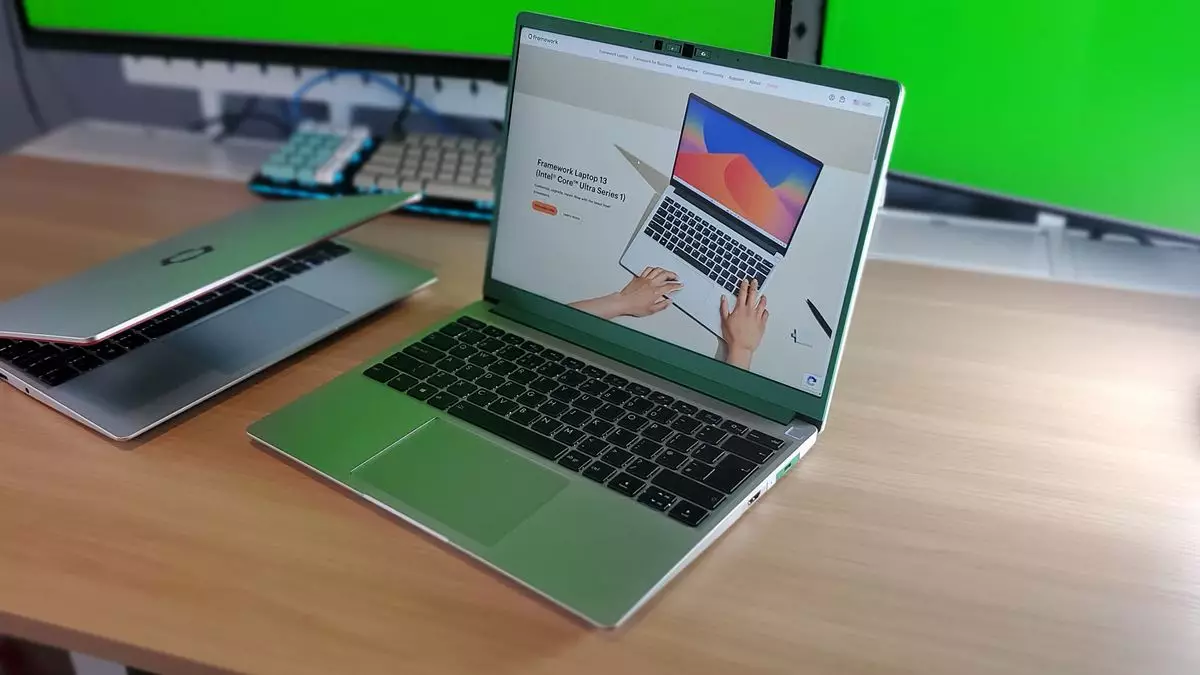In the evolving landscape of global trade, tariffs stand as pivotal instruments wielded by governments, most notably in the United States under former President Trump. Recent developments have illuminated the burden such tariffs impose on companies reliant on international supply chains—especially in the fast-paced electronics and gaming industry. Notably, Framework, an innovative producer of modular laptops, announced that it would pause shipments of certain products due to a significant tariff hike on imports from countries like Taiwan. This move represents a strategic yet painful response to the financial implications these tariffs have on both manufacturers and consumers alike.
Framework’s predicament reveals a seldom-discussed reality of the tech market: amidst strong branding and customer loyalty exists a fragility brought by reliance on foreign manufacturing. Taiwan has earned its reputation as a powerhouse in semiconductor production, largely through companies like TSMC, dominating the chip manufacturing landscape. A dramatic shift occurred recently, with tariffs on Taiwanese imports soaring to a staggering 32%. While semiconductors are nominally exempt from these tariffs, the broader electronics that integrate these chips still bear the burden, creating an uncomfortable squeeze on companies manufacturing in Taiwan.
The Silent Suffering of the Tech Industry
The transparency offered by Framework in communicating its challenges is both commendable and a rarity in the consumer electronics sector. The company clearly articulated the unfortunate reality that pricing of their laptops was established under a 0% tariff framework. Now, being confronted with a 10% tariff, their only option would be to sell the most economical models at a loss. This stark admission is a chilling reminder that profitability fetters innovation and availability—an outcome surely not lost on tech consumers looking to upgrade their hardware.
Framework’s current actions are emblematic of a larger trend spiraling through the tech industry. Manufacturers across various sectors are grappling with similar reevaluations of pricing structures as they adapt to these new tariffs. While many companies choose to remain silent, perhaps fearing backlash or a loss of consumer trust, Framework’s openness starkly contrasts with the industry norm and showcases a potential pathway for honesty in a market that can often prioritize profits over transparency.
The Consumer Dilemma
For consumers, the ramifications of these tariffs have a direct and tangible impact. The pause in sales from Framework has left customers searching for viable alternatives, often at inflated prices. Previously, customers could acquire certain models for around $800, but with pauses on lower-end SKUs, the cheapest available model now pushes nearly $400 higher, compelling buyers to reconsider their budgets or seek alternative options. The cost of technology is escalating not only due to spot pricing increases but also as manufacturers struggle to absorb costs that were previously manageable.
This situation raises an important question: how far can consumers be pushed before they either revolt against rising prices or turn to competitor brands that may be less affected by tariffs? In a climate that vocally champions innovation and consumer choice, the scenario of rising prices sends a conflicting message of accessibility versus elitism. Are we witnessing a new era where only those who can afford premium pricing will have access to the latest technology?
Navigating Uncertainty and Looking Ahead
While Framework has temporarily stepped back from sales on certain products, the hope remains that some semblance of order will return to a deeply misunderstood and tumultuous market. Nonetheless, the looming uncertainties around tariffs continue to shadow the electronic sector. With Taiwan’s continued refraining from implementing reciprocal tariffs in hopes of engaging in productive dialogue with the U.S. government, manufacturers face long-term unpredictability.
Companies like Framework are venturing into uncharted waters, embodying a fragile balance between innovation, consumer demand, and geopolitics. As we witness these shifts, industry watchers and consumers alike anxiously await to see how other manufacturers respond. Will more companies follow Framework’s lead in transparency, or will they retreat into silence, hoping to ride out the storm without disturbing their consumer base? The unfolding narrative around tariffs and their impact on the tech world is one that exposes deeper flaws in supply chain reliance—a reality that demands our attention now more than ever.

